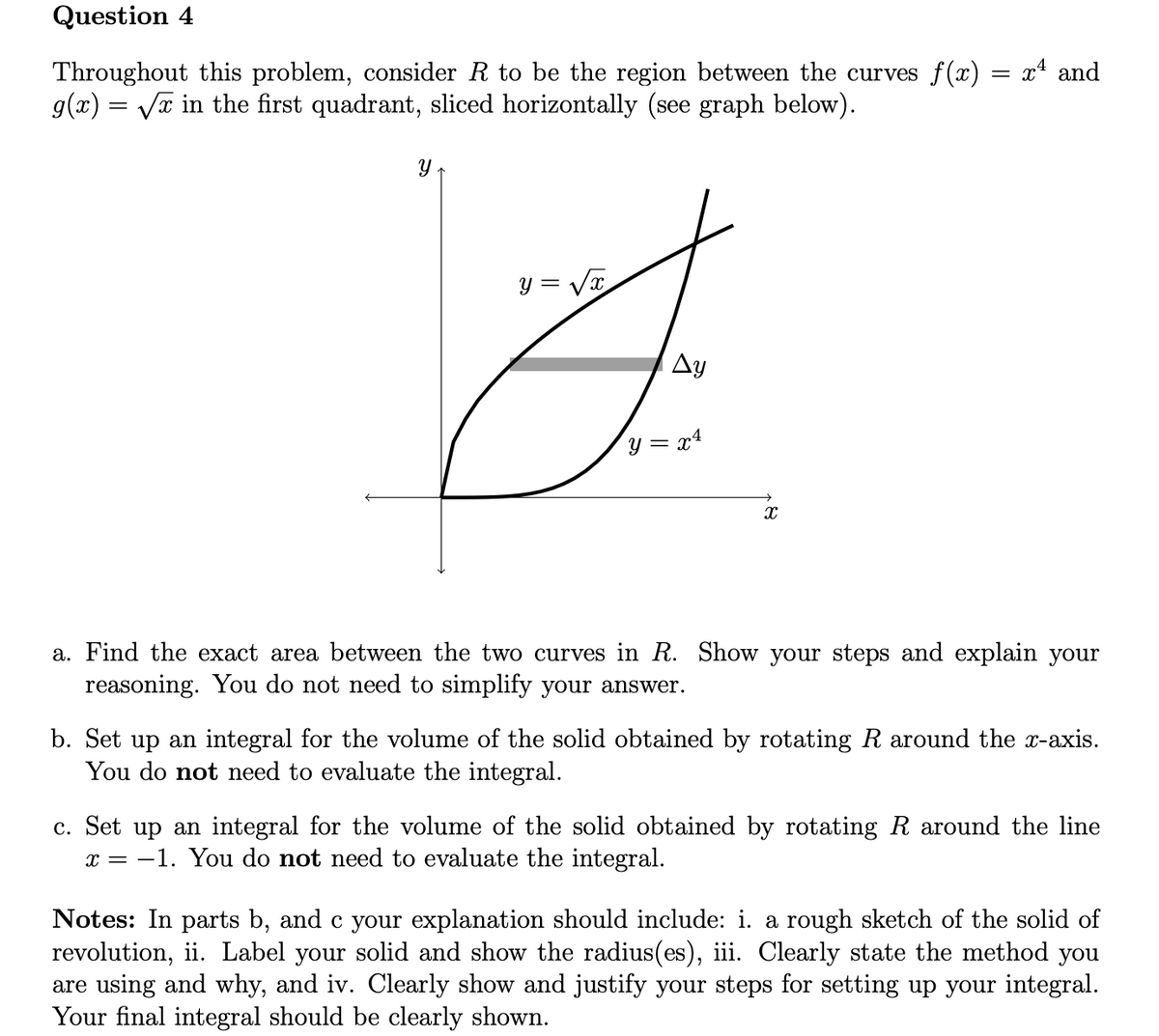Throughout this problem, consider R to be the region between the curves f(x) g(x)=√x in the first quadrant, sliced horizontally (see graph below). x and
Throughout this problem, consider R to be the region between the curves f(x) g(x)=√x in the first quadrant, sliced horizontally (see graph below). x and
Algebra & Trigonometry with Analytic Geometry
13th Edition
ISBN:9781133382119
Author:Swokowski
Publisher:Swokowski
Chapter4: Polynomial And Rational Functions
Section4.3: Zeros Of Polynomials
Problem 67E
Related questions
Question

Transcribed Image Text:Question 4
Throughout this problem, consider R to be the region between the curves f(x) = x² and
g(x)=√x in the first quadrant, sliced horizontally (see graph below).
Y
y = √√√x
J
Δy
y = x²
X
a. Find the exact area between the two curves in R. Show your steps and explain your
reasoning. You do not need to simplify your answer.
b. Set up an integral for the volume of the solid obtained by rotating R around the x-axis.
You do not need to evaluate the integral.
c. Set up an integral for the volume of the solid obtained by rotating R around the line
x = -1. You do not need to evaluate the integral.
Notes: In parts b, and c your explanation should include: i. a rough sketch of the solid of
revolution, ii. Label your solid and show the radius(es), iii. Clearly state the method you
are using and why, and iv. Clearly show and justify your steps for setting up your integral.
Your final integral should be clearly shown.
Expert Solution
This question has been solved!
Explore an expertly crafted, step-by-step solution for a thorough understanding of key concepts.
This is a popular solution!
Trending now
This is a popular solution!
Step by step
Solved in 4 steps with 2 images

Recommended textbooks for you

Algebra & Trigonometry with Analytic Geometry
Algebra
ISBN:
9781133382119
Author:
Swokowski
Publisher:
Cengage

Mathematics For Machine Technology
Advanced Math
ISBN:
9781337798310
Author:
Peterson, John.
Publisher:
Cengage Learning,

Algebra & Trigonometry with Analytic Geometry
Algebra
ISBN:
9781133382119
Author:
Swokowski
Publisher:
Cengage

Mathematics For Machine Technology
Advanced Math
ISBN:
9781337798310
Author:
Peterson, John.
Publisher:
Cengage Learning,